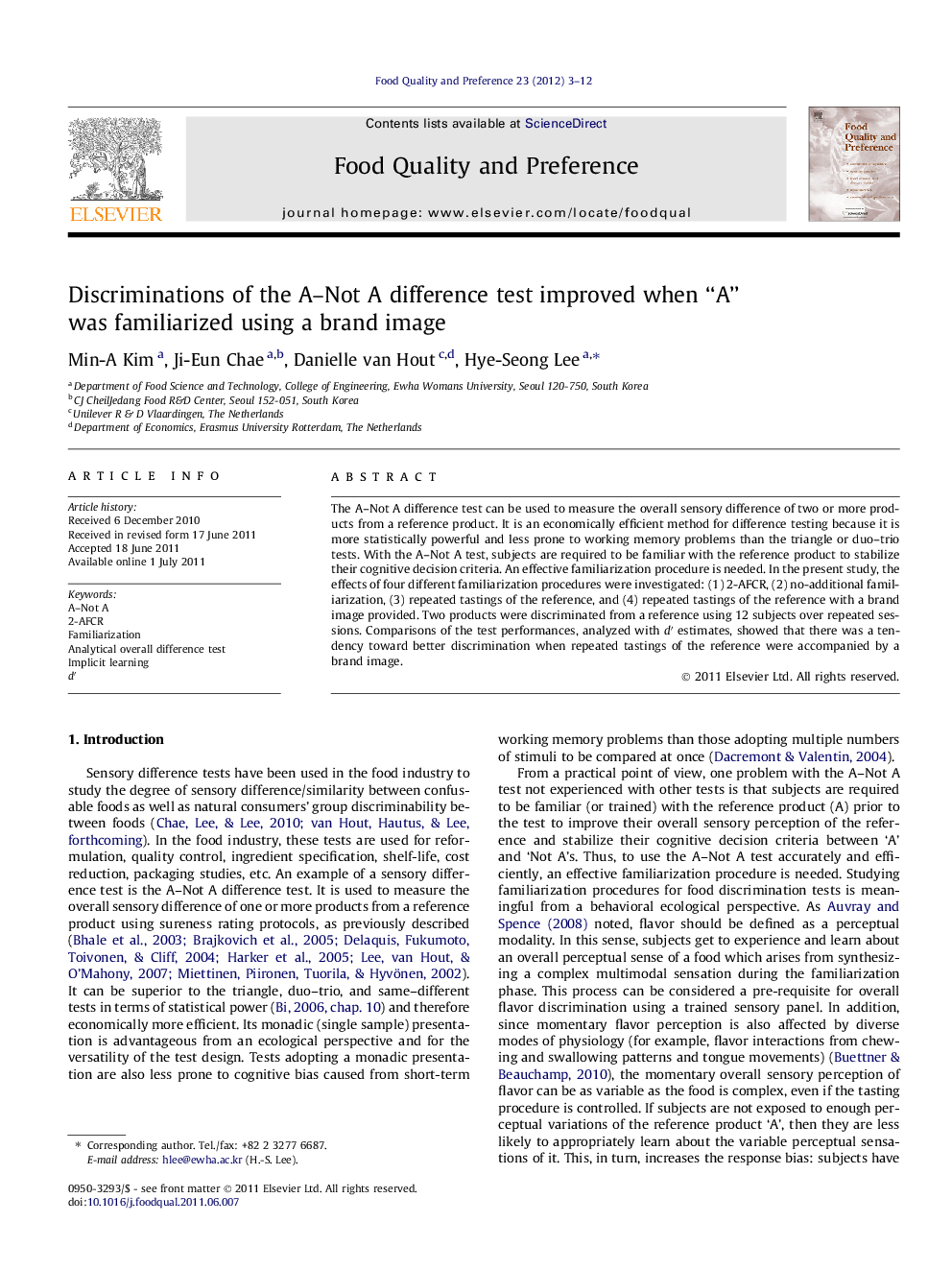| Article ID | Journal | Published Year | Pages | File Type |
|---|---|---|---|---|
| 4317645 | Food Quality and Preference | 2012 | 10 Pages |
The A–Not A difference test can be used to measure the overall sensory difference of two or more products from a reference product. It is an economically efficient method for difference testing because it is more statistically powerful and less prone to working memory problems than the triangle or duo–trio tests. With the A–Not A test, subjects are required to be familiar with the reference product to stabilize their cognitive decision criteria. An effective familiarization procedure is needed. In the present study, the effects of four different familiarization procedures were investigated: (1) 2-AFCR, (2) no-additional familiarization, (3) repeated tastings of the reference, and (4) repeated tastings of the reference with a brand image provided. Two products were discriminated from a reference using 12 subjects over repeated sessions. Comparisons of the test performances, analyzed with d′ estimates, showed that there was a tendency toward better discrimination when repeated tastings of the reference were accompanied by a brand image.
► We examined the effectiveness of familiarization procedures for the A–Not A test. ► Equal-variance model found satisfactory for signal detection analysis of A–Not A data. ► Theoretical relationship between A–Not A and 2-AFCR in detection theory was confirmed. ► The use of a brand image for the reference “A” increased the A–Not A performance. ► Such effect seems to be due to improvements in panel’s motivation and implicit memory.
